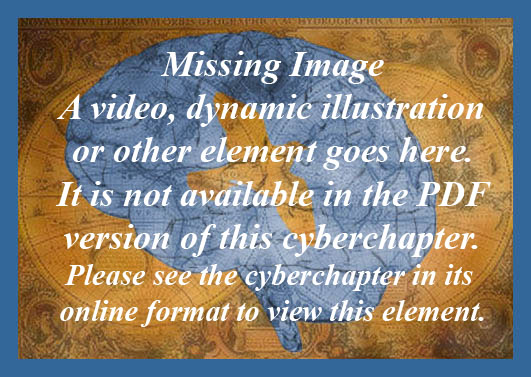Appendix E: Updating the ULM
Under the supervision
of the control system, different blocks are activated to update the
ULM. Let's assume that the region represented in Figure C6 is region
E, located in the environment as indicated in Figure
E1.

|
Figure E1.
Accessibility: Discontinuous region. Places E1 and E4
are examined. Places E2 and E5 (shown in gray) contain
obstacles. After exploration the initial region is
divided in two. One that contains places E1, E4, E2, and
E5 and another that contains places E3 and E6.
|
By using place-region
connections place E1 (see 1 in Figure E2)
activates region E (see 2 in Figure E2)
and the activation spreads in the network using the region-place
connections (see 3 in Figure E2).
Thus, places E1, E2, E4, and E5 become active. Next, the activation
spreads from places E1 and E4, using the place-place connections in
the LLM, to places D6, D3, A6, B4, and B5 (see 4 in Figure
E2). Then, the activation
spreads back at the ULM using the place-region connections, and
regions D, A, and B become active (see 2 in Figure
E2). The connections
between the activated regions (D, A and B) and the current region E
are reinforced in the ULM. Because region F is not active the
connection between region E and region F is weakened. The
connections for the new region E' are updated in a similar fashion.
Region E' activates places E3 and E6 at the LLM (see 3 Figure
E2).
Next, places B6, C4, F1, and F4 become active (see 4 in Figure
E2). Next, regions B, C and
F are activated in the ULM (see 2 in Figure
E2). The activated regions
and the new region E' are connected.

|
Figure E3.
Region division. The obstacle that occupies places 2 and
5 divides the region in two subregions E and E'.
|
In sum, as a result of the
ULM update, region E is connected to regions D, A and B, and region
E' is connected to regions B, C, and F. Figure E3
shows how region E is split in two subregions.
©2005 All
copyrights for the individual chapters are retained by the authors.
All other material in this book is copyrighted by the editor, unless
noted otherwise. If there has been an error with regards to
unacknowledged copyrighted material, please contact the editor
immediately so that this can be corrected. Permissions for using
material in this book should be sent to the editor.
|



